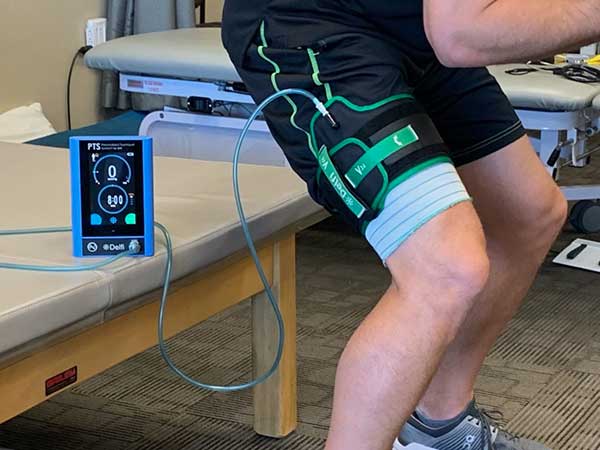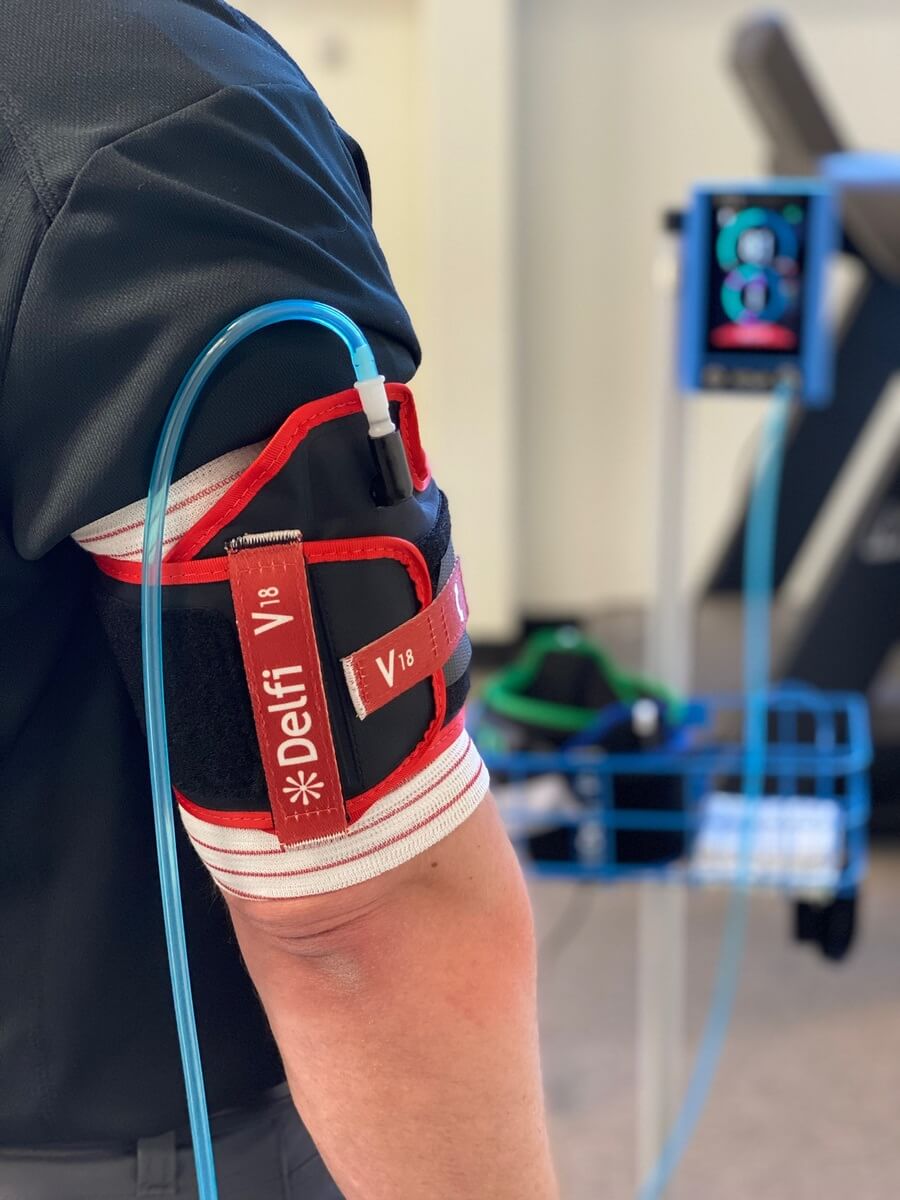Blood Flow restriction Training
Exercises may be carried out using a method called blood flow restriction training that restricts the quantity of blood flowing to the arm or leg. This is often done by firmly wrapping a limb with a cuff or strap to restrict blood flow but not fully occlude it. Blood flow restriction training has the advantage of enabling a person to exercise at a lesser intensity while still receiving the advantages of high-intensity training.
Blood flow restriction training is probably something you’ve heard of and maybe even used, unless you’ve been living under a rock. Like many “fly by night” therapies, its popularity has lately skyrocketed, mostly as a result of media coverage and testimonials from professional athletes. But the fact is, BFR is neither novel nor passing craze.
We are here to inform you that the BFR study, which has been ongoing for more than 20 years, is reliable. And it keeps showing potential as we learn more and more. Can you name one thing we do in the rehabilitation or fitness industries that does not have a solid scientific foundation or credible clinical data to back it up as quickly as you can?
Having to wait…
Isn’t that simple? There are undoubtedly a lot of them. Let’s now consider examples that are the precise opposite. What really has both clinical support and a solid scientific foundation? Ideally, exercise and strength training come to mind first. Strength training is supported by both clinical studies and some rather strong scientific data. Blood flow restriction training must be included as a further modality in that conversation. I’m not one to jump on a bandwagon, but it’s beginning to become obvious that BFR is something we should be thinking about as more and more information is presented. How does BFR training operate then? Let’s investigate it further.
⇒How Can Muscles Strengthen?

Courtesy: Google
Starting with the fundamentals of how muscles become larger and stronger is generally a good approach. Simply stated, neurological, mechanical, and metabolic factors enable muscle adaptation. Even if some of these processes include multi-step routes that may make you fall asleep if we go into too much detail in this piece, it is still crucial to understand them.
In a nutshell, load and volume are everything. Hormonally speaking, growth hormone rises with high-volume, multi-joint workouts whereas testosterone increases with high-load activities.
That’s a important concept…
Low-volume, high-intensity does not enhance growth hormone but high-volume, moderate-intensity did. During typical high-load training, the mTORC1 pathway, myogenic stem cells (MSCs), vascular endothelial growth factor (VEGF), and insulin-like growth factors (IGFs) are all activated. You’ll see that the keyword there is “high load.” We need heavy burdens to become strong. All of these different “ingredients” and routes, taken together, are crucial for muscle development.
⇒What Is the Process of Blood Flow Restriction Training?

Courtesy: google
There are several theories put out as to how BFR operates. According to our present knowledge, exercising with restricted arterial blood flow creates a hypoxic environment that indirectly causes metabolite buildup. Compared to exercise without BFR, this results in higher exhaustion, muscle activation, and anabolic signaling pathways that drive muscular changes.
What should we do, therefore, in situations when individuals are not suitable for large loads or cannot endure them, knowing that growing strong involves a mix of load and volume? for instance, after an operation or an injury. Alternatively, someone who trains at home without access to weights might achieve significant loads. Here, BFR training might be useful.
Because these similar muscle-building components occur in a low-load setting, blood flow restriction training may be a fantastic addition to regular exercise. Muscle protein breakdown occurs in situations of immobility or atrophy. Multiple pathways are triggered during BFR training with low loads, and in some instances, no load at all, to boost muscle protein synthesis.
The hypoxic environment and the factors that contribute to it are essentially a “snowball effect.” The area’s lower oxygen level hastens fatigue and increases the recruitment of high-threshold motor units. It’s “all hands on deck” in the muscle, to put it another way. A trigger for hypertrophy is the decreased pH brought on by the hypoxic environment.
The “muscle pump” also has an additional advantage due to cellular swelling. Metabolites really start to build up as a result of the compression, and we’ve previously spoken about the advantages of this. The floodgates effectively open when the compression is lessened or alleviated, allowing all those “muscle-building ingredients” to enter the muscle.
Unlock exclusive content now! Sign up for our membership plan to access premium features and unlock this private content. Click here to subscribe and enjoy unlimited access today.
Click here And unlock the content.



